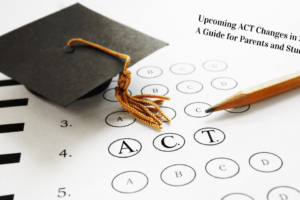
Don’t be Passive: How to Read Actively
 When it comes to reading comprehension, there are so many terms being bandied about out there that sound amazing. “Active reading” is one of them, and like most of these phrases, it’s easy to say but harder to do. What does it mean to read actively as opposed to passively? We’ve all had that experience of reading without really reading. Sure, the words are technically going into your head, but the author’s meaning and intent are not. Combating this can be hugely challenging, particularly when the reading material is dry or tedious (i.e. standardized test stuff.)
When it comes to reading comprehension, there are so many terms being bandied about out there that sound amazing. “Active reading” is one of them, and like most of these phrases, it’s easy to say but harder to do. What does it mean to read actively as opposed to passively? We’ve all had that experience of reading without really reading. Sure, the words are technically going into your head, but the author’s meaning and intent are not. Combating this can be hugely challenging, particularly when the reading material is dry or tedious (i.e. standardized test stuff.)
So what’s the difference between the active and the passive reader? I have delineated each one’s qualities below. Be open-minded when you read them, even the bad ones. I’m guilty of every single one of the passive reader’s transgressions, and I continue to try to apply the active reader’s tactics to varying levels of success. Here is what each one does:
The PASSIVE Reader
- Reads angry: judges the material instead of working with it; makes statements like “this stinks” or “this is SO boring” or “UGGGHHHHH.”
- Skims: reads half-sentences and mentally turns the author’s full thoughts into fragments, thus winding up with a fragmented understanding of the piece.
- Thinks about other stuff: does not remain “in the moment” while reading; constantly thinks about when the passage will be over or he will do afterwards; daydreams.
- Pretends to have a photographic memory: tells himself that he doesn’t need to make any marks on the text or underline anything because he’ll easily remember where all the information is.
- Waits too long to admit lack of concentration: doesn’t admit he’s unfocused until it’s too late; gets to the end of the passage and says “I didn’t get any of that” or “what?”
The ACTIVE Reader
- Reads with a Zen-like calm: does not judge the material; rather, listens to it and follows the author’s logical path of ideas. This is not to say he loves every word of it, but rather that he accepts the information and does not fight it or judge it.
- Reads for understanding: reads not to get it done, but to understand. While this may mean a “quick and light” reading, it does not mean a “skim” read, which implies speed over comprehension.
- Focuses: stays in the moment, focusing on each line and word as it is presented, and not jumping ahead, making predictions, or losing the author’s trail of logic.
- Uses his tools: your pencil is your friend when reading something dry and packed with information. Using it to note names, dates, and information you’d like to remember helps you to avoid a “Where’s Waldo?*” situation when it’s time to answer the questions.
- Puts himself on probation: gives himself a 10 (or so) line limit in which to be sure he has a good start and understands the beginning of the passage. If he doesn’t, he goes back and starts again before it’s too late.
Which one do you want to be? Yes, the active reader has to focus more, but in the end, he also ends up with more points on the test, better skill at reading in general and, most likely, a better score on a standardized test.
*a situation in which the passage comes to resemble a Where’s Waldo? picture because the reader does not know where anything is, and struggles to locate needed information, much like one struggling to find Waldo. This can lead to undue stress, panic and, in extreme cases, acts of exaggerated frustration such as tearing up the picture.
Written by Phil Lane



